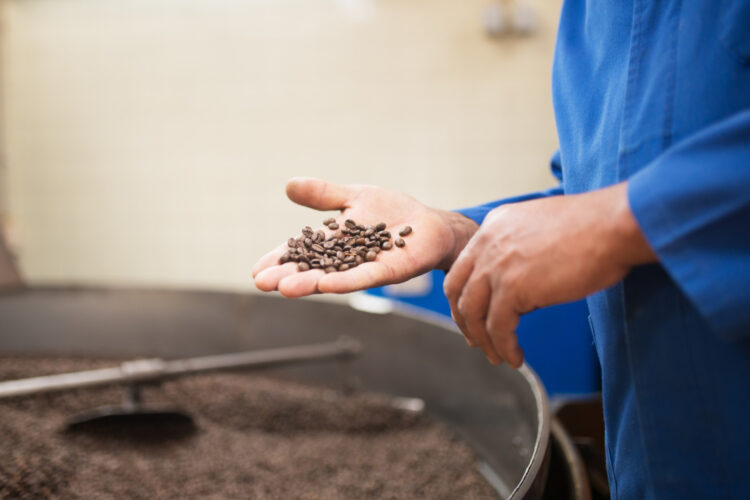Coffee is an integral part of many people’s daily routines, and with the rise of specialty coffee, the options available can be overwhelming. One of the primary choices coffee drinkers face is between single-origin and blended coffee. Single-origin coffee refers to coffee that is sourced from a single geographic location, while blended coffee is a mixture of beans from multiple regions.
In this post, we will explore the differences between single-origin and blended coffee, and provide information to help you determine which bean and brew is right for you.
Single-Origin Coffee
Single-origin coffee is coffee that is sourced from a single geographic location. This means that the coffee beans come from one specific farm or region, and are not blended with beans from other locations. The main advantage of single-origin coffee is that it allows you to experience the unique flavors and characteristics of the region from which the coffee originated. For example, a coffee from Ethiopia may have floral and fruity notes, while a coffee from Colombia may have chocolate and nutty undertones.
However, the disadvantage of single-origin coffee is that the flavor profile can be inconsistent. Factors such as climate, soil, and altitude can greatly affect the flavor of the coffee, and even within a single region, there can be variations in the beans due to differences in processing methods. Additionally, single-origin coffee can be more expensive than blended coffee, as the beans are often of higher quality and more labor-intensive to produce.
When choosing a single-origin coffee, it is important to consider the region and the processing method. Some popular single-origin coffees include:
- Ethiopian Yirgacheffe: Known for its bright acidity and fruity notes, this coffee is often roasted light to highlight its unique flavor profile.
- Colombian Supremo: A classic coffee with a medium body and a balanced flavor profile that is easy to drink.
- Kenyan AA: This coffee is known for its intense acidity and berry-like flavor, making it a favorite among those who prefer bright, bold coffee.
Blended Coffee
Blended coffee is a mixture of beans from multiple regions. The main advantage of blended coffee is that it can create a consistent flavor profile. Coffee roasters can blend beans from different regions to create a unique flavor profile that is consistent from batch to batch. Additionally, blended coffee can be more affordable than single-origin coffee, as the beans are often less expensive and more readily available.
However, the disadvantage of blended coffee is that it can mask the unique flavors of the individual beans. While blended coffee can create a consistent flavor profile, it can also result in a less complex flavor profile. Additionally, some blended coffees may contain lower quality beans that are used to cut costs.
When choosing a blended coffee, it is important to consider the beans that are used in the blend. Some popular blended coffees include:
- Espresso Blend: A blend of beans that is designed to create a rich, bold flavor that is perfect for espresso.
- Breakfast Blend: A lighter blend of beans that is designed to be easy to drink in the morning.
- French Roast Blend: A blend of beans that is roasted dark to create a bold, smoky flavor that is perfect for those who prefer strong coffee.
Comparison between Single-Origin and Blended Coffee
While both single-origin and blended coffee have their advantages and disadvantages, there are some key differences to consider when choosing between the two.
Taste and Flavor: Single-origin coffee allows you to experience the unique flavor profile of a specific region, while blended coffee can create a consistent flavor profile.
Price: Single-origin coffee can be more expensive than blended coffee, as the beans are often of higher quality and more labor-intensive to produce.
Availability: Blended coffee is often more readily available than single-origin coffee, as the beans can be sourced from multiple regions.
In addition, single-origin coffees are often more expensive than blended coffees, since they are grown in smaller quantities and may require more specific processing methods. This can make them less accessible to consumers who are on a budget or are looking for a more affordable option.
On the other hand, blended coffees can provide a more consistent flavor profile from batch to batch. Roasters have the ability to blend beans from different regions and varietals to create a specific taste and aroma that can be replicated. This can be particularly useful for coffee shops or brands that want to maintain a consistent flavor across their product line.
Blended coffees also have the advantage of being more forgiving during the roasting process. Since they are made up of different beans with varying flavor profiles, there is more room for error when roasting. This means that a roaster can make adjustments to the roast level or time without compromising the overall taste of the coffee.
Finally, blended coffees can offer a wider range of flavor profiles than single-origin coffees. Roasters can experiment with different combinations of beans to create unique and complex flavor profiles that may not be possible with a single-origin coffee. This can make blended coffees an exciting option for coffee enthusiasts who are looking for something new and interesting to try.
In conclusion, both single-origin and blended coffees have their own unique advantages and disadvantages. The decision of which one to choose ultimately comes down to personal preference and taste. If you enjoy exploring the unique flavor profiles of different regions and varietals, single-origin coffee may be the way to go. If you prefer a more consistent flavor or are looking for a more affordable option, blended coffee may be the better choice. Whatever you choose, remember that there is no right or wrong answer when it comes to coffee – it’s all about finding what works best for you and your taste buds.

